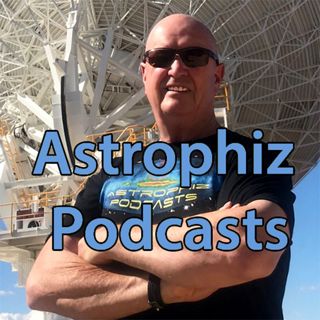Om episode
Today we’d like to welcome Tommy Marshman, an early stage researcher who is completing his Masters of Research at Macquarie University in Sydney Australia. Tommy explains his research comparing the effectiveness of CPU and GPU pipelines when working with galactic plane surveys using Parkes data. In ‘What’s Up Doc’ for astrophotographers and observers, Dr Ian ‘Astroblog’ Musgrave tells us what to look out for in the morning and evening skies. In ‘Ian’s Tangent’ he looks at the controversy surrounding Elon Musk's Starlink 'constellation' of satellites. ere is the Astrophiz news. News: .1. In a paper published today in Nature, another fabulous example of how archival data can be cleverly interrogated to lead to great new discoveries. The paper is titled: A cool accretion disk around the Galactic Centre black hole Lead author, PhD student Lena Murchikova and her colleagues used data gathered in 2015 by the Atacama Large Millimeter/submillimeter Array (ALMA) to discover a thin rotating accretion disk of material extremely close to the black hole that is sending streams of material spiraling inward. Earlier studies had revealed a more distant disk of warm gas farther away from the black hole which may feed the newfound cooler disk. We have detected a number of supermassive black holes with bright hot disks of orbiting gases around them, but up till now, SagA*, the supermassive black hole at the center of our Milky Way has not shown much at all, so while there is still so much more to learn about SagA* kudos to Murchikova and her team. .2. A group of international astronomers say they have observed a "forbidden" planet closely orbiting a star. The discovery of the exoplanet NGTS-4b was revealed in a study published by the Royal Astronomical Society and has challenged our understanding of stars and solar systems. Key points: A team of international astronomers found the exoplanet NGTS-4b by using the transit method and looking for a dip in light in front of the star The planet NGTS-4b exists in a "Neptunian Desert" zone where previous studies found no gaseous planets It was found in the "Neptunian Desert", a zone previously thought to be inhospitable to gaseous Neptune-like planets. This area receives such strong heat and radiation, it was thought planets would not be able to retain their gaseous atmosphere — it would simply evaporate, leaving only a rocky core. But NGTS-4b still has its gaseous atmosphere. The researchers believe the planet may have moved into the zone relatively recently, in the last 1 million years It's about three times the size of Earth and 920 light-years away from our planet. .3. For those who want to have a look for the starlink satellites passing over their home, go to tinyurl.com/starlinkme

